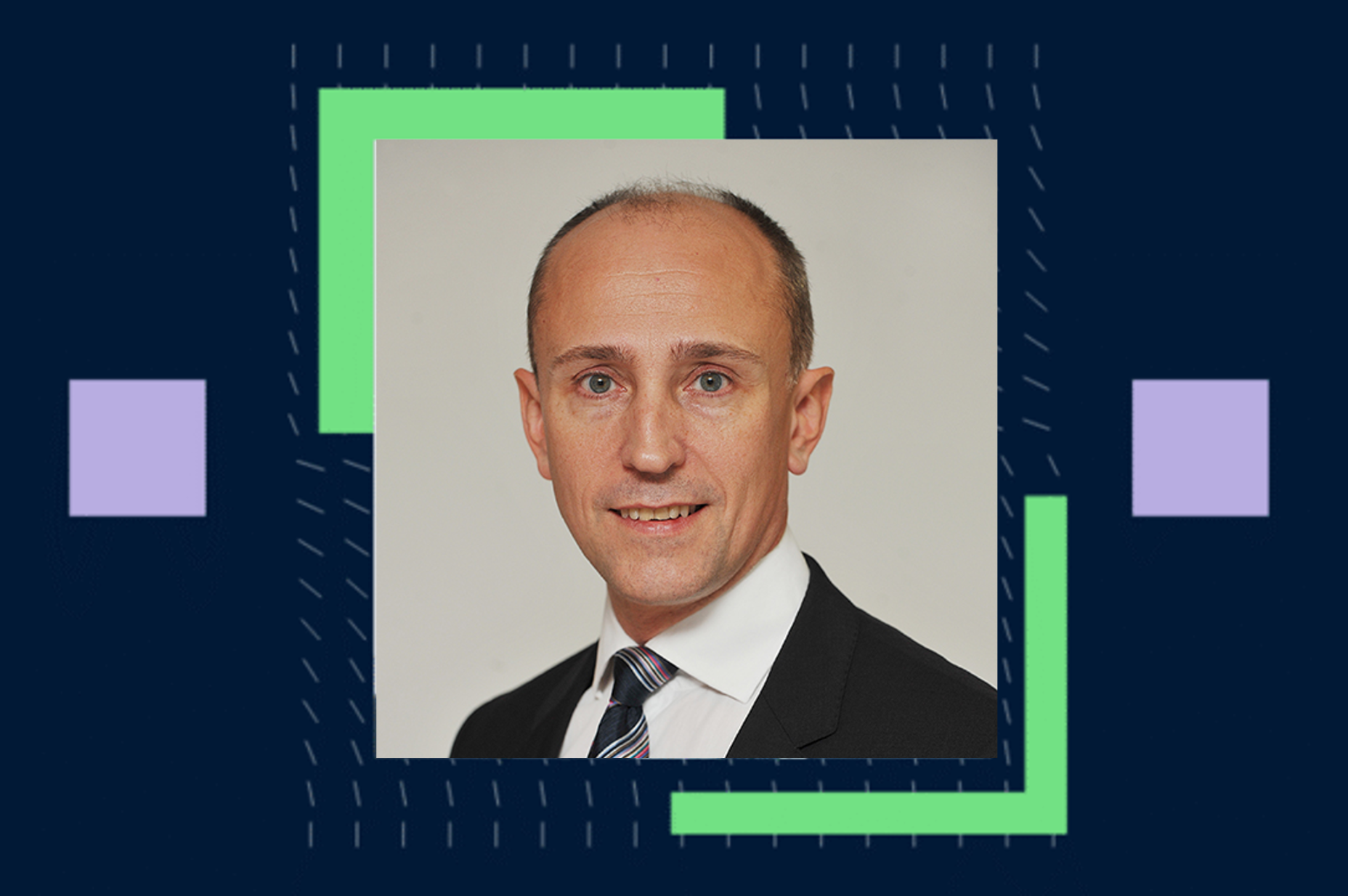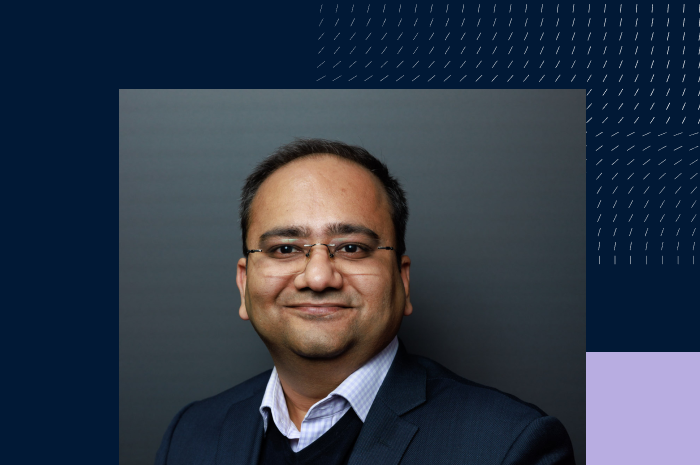 The wealth management industry is facing unprecedented change from numerous directions. Andrew Boniface, Head of Product EMEA at GBST, argues that firms need to have a solid technology foundation in place to adapt to the new world or risk being overtaken by the competition.
The wealth management industry is facing unprecedented change from numerous directions. Andrew Boniface, Head of Product EMEA at GBST, argues that firms need to have a solid technology foundation in place to adapt to the new world or risk being overtaken by the competition.
The last year has been a time of great uncertainty for all of us. For wealth managers, the pandemic intensified existing pressures facing the industry through shifting customer expectations, growing competition, continued regulatory change, rising costs, and squeezed profit margins. However, supported by the right technology foundation, enterprising firms are in a strong position to capitalise on their strengths, adapt to industry and societal changes, reduce their cost base, and grow market share.
Increasing demand for digitalisation
From the customer’s perspective, greater digital literacy across all generations has raised expectations of the online experience. It has stimulated demand for information and consumer-centric services that are always available, accessible from multiple devices, and have a consistent feel across all touchpoints. The restrictions to our regular behaviour, due to the pandemic, have accelerated existing trends. The slick digital experience presented by other industries means customers now expect the same from all providers, including wealth managers. Salesforce research found that 62% of customers say their dealings with one industry influences their expectations of others.
These expectations, coupled with the ease of researching financial products and services online, have led to a decline in long-term loyalty to a particular brand. If clients are not happy with the service from one provider, customers are now more likely to switch to another. A survey by Netwealth in September 2020, found that a third of wealth management clients in the UK were considering switching provider, with a quarter (23%) blaming poor digital services.
The rise of personalisation
New technologies including natural language chatbots, artificial intelligence (AI), and machine learning are changing the way organisations conduct business and engage with customers. Many industries are becoming proficient at using customer data to improve the customer experience. For example, online streaming service, Netflix, learns customer preferences through repeated use to serve more personalised recommendations for films and television shows. The success of these firms is raising consumer expectations that their personal data will be used to improve and personalise their experience with other service providers.
As personalisation filters through to wealth management, it has become most prevalent in savings propositions. Financial organisations that have customer experience front-of mind are now offering services such as the choice to round up transactions, in a bid to help make the customer aware that their loose change will add up if they choose to invest wisely. Personalisation can also be seen in categorised reporting of monthly spending habits, with real-time notifications to let customers know that their recent spending behaviour is leading to additional savings at the months’ end and direct them to top up their investment account.
Increasing margin pressure
Wealth managers face increased competition from new entrants attracted to the sector’s growth opportunities. With costs to launch declining and more investment and regulatory support available to start-ups, challenger brands are finding it easier to launch and create digital-first propositions, without the legacy system issues faced by many existing wealth managers. To remain competitive, infrastructure needs to be at the forefront of decisions. If it is outdated, investing in a modern technology stack is often the best way to enable businesses to stay relevant, adapt at pace, and continue leading into the future.
Successful organisations in other industries could also be drawn to the market, using their established technological and brand capabilities to offer efficient services and win market share. According to Capgemini’s latest world wealth report, 74% of high-net-worth individuals would be willing to consider wealth management services from firms such as Google, Apple, or Amazon, increasing to 94% of those who are considering switching their primary wealth management provider in the next 12 months.
New rules around transparency create further awareness of the charges paid to financial service providers. A third of respondents were uncomfortable with the cost of wealth management services in 2019, and the volatility of the last 12 months will increase this scrutiny. The report found that one in five wealthy individuals could switch providers in the next year, with 42% stating high fees as the main motivator.
Further pressure on margins is coming from rapidly changing regulations across different jurisdictions, which can be challenging and costly for established wealth managers to embed into their processes. This often results in additional manual workarounds that create barriers to efficiency and growth.
The wealth management opportunity
So how can traditional firms navigate these multiple pressures? The changing market dynamics present extensive opportunities for organisations that are prepared to adapt. In wealth management, loyalty and success are based on solid customer relationships and trust in the business’s expertise, supported by a seamless customer experience. Building on their existing relationships, wealth managers are well-positioned to create customer-centric operating models that place users at the centre of decision making to meet the evolving demands of the market, clients, and regulators. Investing in new IT architecture can facilitate this transformation while controlling costs and creating operational efficiencies that help firms remain competitive, manage risk, and ensure data security.
Today’s technology presents two main options for wealth managers. The first is to start afresh and re-build with a modern stack. This will reduce costs in the long run and offers the advantage of simplicity and future-proofs the architecture, making it easier to stay up to date as technology evolves and business, client, and regulatory needs change.
However, we recognise that not all businesses can move wholesale to a new tech stack immediately. The alternative is for firms to integrate legacy systems into an updated, digital front-end solution. It can reduce costs by increasing the automation of business practices and enhanced straight-through processing but there will be limiting factors, are the right APIs available to provide consistent, compatible connections between systems. Will growth and agility be inhibited by reducing access to new functions and capabilities through 3rd party services, will your propositions be able to continually expand and evolve for the benefit of the consumer?
The foundation of a wealth managers ecosystem needs to be capable of talking to and taking advantage of the latest technology and needs to be the right foundation for your business. They need to have the ability to leverage cloud technologies and infrastructure models such as Software-as-a-Service (Saas), which can be scaled up and down based on demand with enhanced security levels. This creates a robust solution and will make the introduction of any new, emerging technology components quicker and easier.
We hear it all the time, API, API, API but it is true. Unless your wealth platform can talk easily to other 3rd party services innovation will die and ability to quickly adapt your proposition won’t be possible. If integration is a blocker then you are either talking to the wrong people or have the wrong foundation in place.
Data is the key to unlock the secrets of your customer and operational processes to determine which business decision you take next. With the increasing affordability of big data analytics, where vast amounts of information can be analysed quickly and effectively, wealth managers can understand their customers, tailor marketing, and develop bespoke digital experiences. But maybe more importantly in a decreasing margin environment, data from the back office will tell you which business processes are costing you the most, what exceptions are killing the administration teams and also learn how to adapt processes so they become optimised
The current period of industry change presents an immense opportunity for wealth managers to build on their existing capabilities and embrace innovative technology. This will improve efficiency, cuts costs, and support evolving client and market needs. With the right technology partner, wealth managers can develop their strengths to create a future-proof proposition for continued growth and success, but get the foundation right, don’t build on sand.
The GBST solution
GBST is committed to building the best technology architecture to help wealth managers navigate the current challenges and future-proof their businesses for continued success. Our proven solutions support emerging client and market needs while keeping costs low, and without compromising on flexibility, security, and speed.
We are a trusted technology partner for many of the world’s leading wealth management brands with over 5.5million global investors administered on our products. The Composer wealth management technology platform offers a comprehensive suite of solutions to streamline the administration of wealth management products, from the distribution channel through to the back office. Built on a single code base, it is customisable and easily scaled to support a broad range of products and functionality. Providing deep expertise and rich features, the platform supports wealth managers, pension and life companies, investment banks, and fund managers across APAC and EMEA.
Over the last two years, Composer has been undergoing a $75million investment and advancement program. The underlying technology stack has been transformed with a modernised user experience to deliver a responsive, content-driven digital engagement solution that helps wealth managers adapt more easily to changing market dynamics, now and in the future.
Built using the latest technologies and standards, businesses can integrate Composer with their existing architecture strategies, digital propositions, and third-party solutions. The modular nature of our technology makes it convenient and straightforward to introduce new technologies alongside existing core features. Using our catalogue of APIs, organisations can create a unique business model combining Composer’s wide range of processes with internal operations and their chosen external partners, and rapidly configure the system to introduce new products and services to market. Our regulatory programme ensures firms can adapt to regulatory change and remain up-to-date and compliant with legislation in a cost-effective manner. Automated testing and continuous deployment reduce the effort required to install updates and upgrades.
GBST offers the broadest set of product wrappers available on a single instance of software and continually invests in our core products to facilitate future propositions. Our front-end portal, Catalyst, supports highly personalised and omnichannel engagement to revolutionise the customer experience. Our clients can leverage cloud technologies to reduce their internal infrastructure needs but introduce scale processing when needed. Our data capture technology and real-time analytics can unlock data from core systems to help identify administration efficiency improvements, detect fraud, and personalise the customer experience through better insight, machine learning, and AI.
The current period of industry change presents an immense opportunity for wealth managers to build on their existing capabilities and embrace innovative technology. This will improve efficiency, cuts costs, and support evolving client and market needs. With the right technology partner, wealth managers can develop their strengths to create a future-proof proposition for continued growth and success.
Find out more about our Composer wealth management technology platform
References
https://www.salesforce.com/resources/articles/customer-engagement/
https://citywire.co.uk/wealth-manager/news/one-third-of-clients-considering-switching-wealth-managers/a1404265
https://www.capgemini.com/gb-en/news/research-world-wealth-report-2020/
Posted in: Wealth Management Administration




